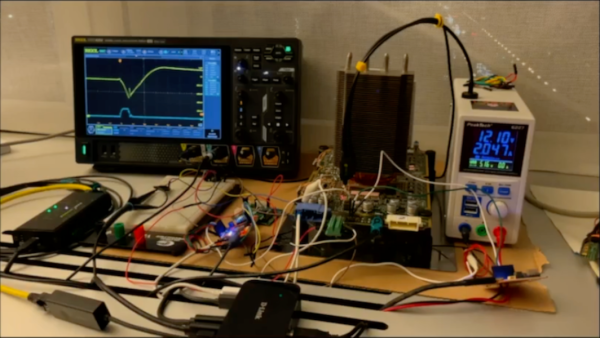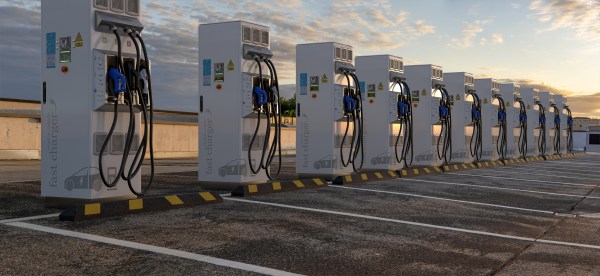Are robotaxis poised to be the Next Big Thing™ in North America? It seems so, at least according to Goldman Sachs, which issued a report this week stating that robotaxis have officially entered the commercialization phase of the hype cycle. That assessment appears to be based on an analysis of the total ride-sharing market, which encompasses services that are currently almost 100% reliant on meat-based drivers, such as Lyft and Uber, and is valued at $58 billion. Autonomous ride-hailing services like Waymo, which has a fleet of 1,500 robotaxis operating in several cities across the US, are included in that market but account for less than 1% of the total right now. But, Goldman projects that the market will burgeon to over $336 billion in the next five years, driven in large part by “hyperscaling” of autonomous vehicles.
tesla120 Articles
Hackaday Links: February 2, 2025
All things considered, it was a very bad week for aviation here in the United States. Three separate crashes, two of which involved US military aircraft, have left over 70 people dead. We’ll spare you the details since there are plenty of other places to get news like that, but we did want to touch on one bright spot in this week’s aviation news: the first successful supersonic flight by a US-made civilian aircraft. There are a lot of caveats to that claim, but it’s clear that Boom Supersonic is on a path to commercializing supersonic air transportation for the first time since the Concorde was retired. Their XB-1 “Baby Boom” test aircraft managed three separate supersonic runs during the January 28 test flight over the Mojave test range. As usual, Scott Manley has excellent coverage of the test flight, including a look at how Boom used a Starlink terminal and an iPhone to stream cockpit video.
This Week In Security: Apple Backdoors Curl, Tor’s New Bridge, And GhostRace
OK, that headline is a bit of a cheap shot. But if you run the curl binary that Apple ships, you’re in for a surprise if you happen to use the --cacert flag. That flag specifies that TLS verification is only to be done using the certificate file specified. That’s useful to solve certificate mysteries, or to make absolutely sure that you’re connecting to the server you expect.
What’s weird here is that on a MacOS, using the Apple provided curl binary, --cacert doesn’t limit the program to the single certificate file. On an Apple system, the verification falls back to the system’s certificate store. This is an intentional choice by Apple, but not one that’s aimed particularly at curl. The real magic is in Apple’s SSL library, which forces the use of the system keychain.
The current state of things is that this option is simply not going to do the right thing in the Apple provided binary. It’s documented with the note that “this option is supported for backward compatibility with other SSL engines, but it should not be set.” It’s an unfortunate situation, and we’re hopeful that a workaround can be found to restore the documented function of this option. Continue reading “This Week In Security: Apple Backdoors Curl, Tor’s New Bridge, And GhostRace”
Hackaday Links: February 4, 2024
Things may not have gone as planned last week for the flying cellphone on Mars, but just because Ingenuity‘s flying career is over doesn’t mean there’s no more work to do. NASA announced this week that it’s going to try a series of “wiggle” maneuvers on Ingenuity‘s rotors, in an attempt to get a better look at the damage to the blade tips and possibly get some clues as to what went wrong. The conjecture at the moment seems to be that a large area of relatively featureless terrain confused the navigation system, which uses down-facing cameras to track terrain features. If the navigation program couldn’t get a bead on exactly how far above the ground it was, it’s possible the copter came in too hard and caused the rotor tips to dig into the regolith. There seems to be some photographic suggestion of that, with what looks like divots in the ground about where you’d expect the rotor tips to dig in, and even scraps of material that look out of place and seem to be about the same color as the rotor blades. All this remains to be seen, of course, and we’re sure that NASA and JPL are poring over all available data to piece together what happened. As much as we hate to say goodbye to Ingenuity, we eagerly await the post-mortem.
Getting Root Access On A Tesla
A growing number of manufacturers are locking perfectly good hardware behind arbitrary software restrictions. While this ought to be a bigger controversy, people seem to keep paying for things like printers with ink subscriptions, cameras with features disabled in firmware, or routers with speed restrictions, ensuring that this practice continues. Perhaps the most blatant is car manufacturers that lock features such as heated seats or even performance upgrades in the hopes of securing a higher price for their vehicles. This might be a thing of the past for Teslas, whose software has been recently unlocked by Berlin IT researchers.
Researchers from Technische Universität Berlin were able to unlock Tesla’s driving assistant by inducing a two-microsecond voltage drop on the processor which allowed root access to the Autopilot software. Referring to this as “Elon mode” since it drops the requirement for the driver to keep their hands on the steering wheel, they were able to access the full self-driving mode allowing autonomous driving without driver input. Although this might be a bad idea based on the performance of “full self-driving” in the real world, the hack at least demonstrates a functional attack point and similar methods could provide free access to other premium features.
While the attack requires physical access to the vehicle’s computer and a well-equipped workbench, in the short term this method might allow for owners of vehicles to use hardware they own however they would like, and in the long term perhaps may make strides towards convincing manufacturers that “features as a service” isn’t a profitable strategy. Perhaps that’s optimistic, but at least for Teslas it’s been shown that they’re not exactly the most secured system on four wheels.
Tesla’s Plug Moves Another Step Closer To Dominance
Charging an EV currently means making sure you find a station with the right plug. SAE International has now published what could be the end to the mishmash of standards in North America with the J3400 North American Charging Standard.
The SAE J3400TM North American Charging Standard (NACS) Electric Vehicle Coupler Technical Information Report (TIR), which just rolls off the tongue, details the standard formerly only available on Tesla vehicles. We previously talked about the avalanche of support from other automakers this year for the connector, and now that the independent SAE standard has come through, the only major holdout is Stellantis.
Among the advantages of the NACS standard over the Combined Charging System (CCS) or CHAdeMO is a smaller number of conductors given the plug’s ability to carry DC or AC over the same wires. Another benefit is the standard using 277 V which means that three separate Level 2 chargers can be placed on a single 3-phase commercial line with no additional step down required. Street parkers can also rejoice, as the standard includes provisions for lampost-based charger installations with a charge receptacle plug instead of the attached cable required by J1772 which leads to maintenance, clutter, and ADA concerns.
Now that J3400/NACS is no longer under the purview of a single company, the Federal Highway Administration has announced that it will be looking into amending the requirements for federal charger installation subsidies. Current rules require CCS plugs be part of the installation to qualify for funds from the Bipartisan Infrastructure Bill.
If you want to see how to spice up charging an EV at home, how about this charging robot or maybe try fast charging an e-bike from an electric car plug?
Hackaday Links: December 3, 2023
Sure, it does less than originally promised, but hey — at least it’s more expensive. That about sums up Tesla fans’ feelings after the long-awaited Cybertruck reveal at the Texas Gigafactory on Thursday, where Elon Musk himself handed over the keys — or their Cyber equivalent — to a few new owners. These are expensive machines — $61,000 for the two-motor model, and just shy of $100,000 for the three-motor all-wheel-drive model with all the bells and whistles. That’s considerably more than they were expected to cost back in 2019, a fact which may be at least partially behind the drop in Tesla shares after the launch.















